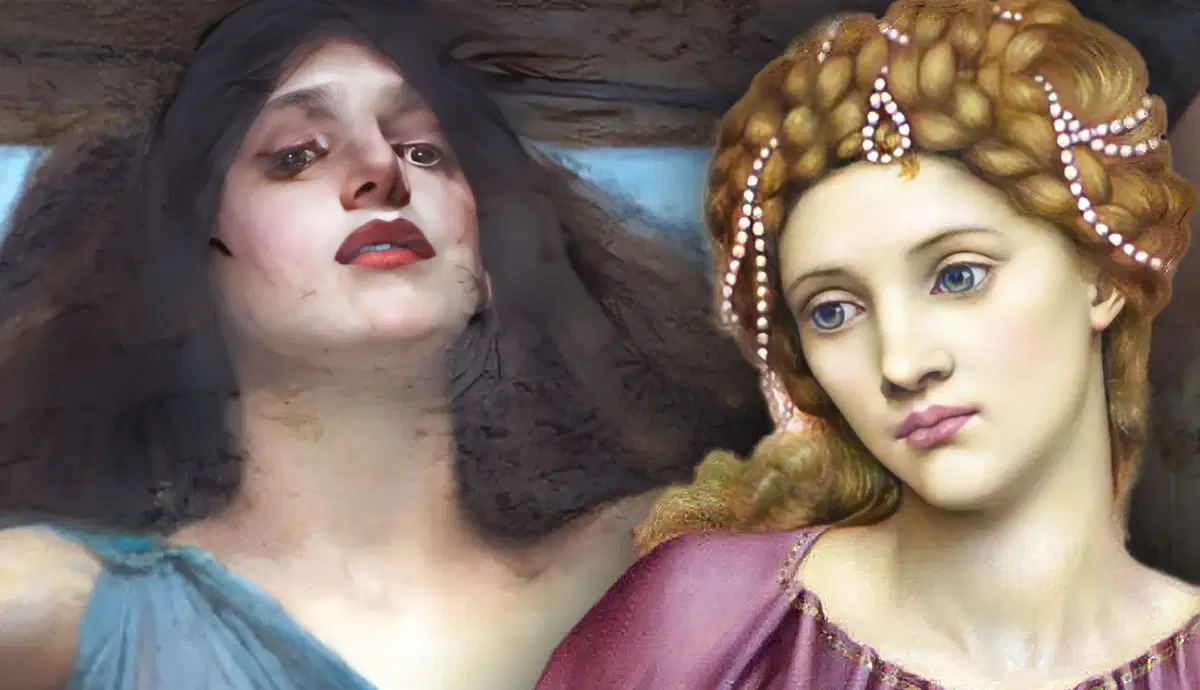
The mystical practice of alchemy surrounds the transformation and creation of matter. Alchemists were most concerned with learning how to convert base metals into gold and achieving immortality with an elixir of life. It was also considered the predecessor of scientific chemistry and has long captivated the human imagination. Hecate, as the Greek goddess of magic and witchcraft, has a unique and ancient relationship with the study of alchemy. Although the connection is mostly symbolic, as a goddess closely related to sorcery and potion making, she is a deity that many alchemists would have been drawn to while practicing this mysterious subject.
Hecate: Divine Entity of Transformation

At its core, alchemy is about transforming earthly materials into something more valuable or divine. They seek to make their own spiritual transition towards enlightenment, defy diseases, and go beyond the scope of mortality. In Greek mythology, Hecate is portrayed as a triple-bodied deity, embodying the transition from maiden, to mother, to crone throughout a woman’s life. As the goddess of the crossroads, she also governs the intersections of life and death and the boundaries between the earthly and divine realms.
She is associated with liminal spaces, where boundaries blur and change is inevitable. Hecate’s association with transformation, sorcery, and magic are elements that closely connect her to alchemy and those that practice it.
She Helps Guide Alchemists

Alchemy is famous for its symbolic language and spiritual aspirations. Those who practice it seek the Magnum Opus, or Great Work, and strive to create the philosopher’s stone. This pursuit involves transforming the alchemist’s inner self and the transmutation of base elements into the divine. Hecate, as the chief goddess that presides over magic and transitions, is a guiding force in the alchemist’s journey. She is often invoked by alchemists who seek out her assistance in unlocking the secrets of the cosmos. Like any mortal standing at a crossroads in their life, alchemists require her spiritual guidance and wisdom to achieve enlightenment.
The Moon as an Alchemical Symbol

The moon is a celestial body tied to both human transformation and the cycles of nature, which is why it’s a significant symbol in alchemy. Although Hecate is not one of the famous moon goddesses in Greek mythology like Artemis or Selene, she is still closely associated with the moon, especially its phases. As a triple-bodied deity, she is often represented by the triple moon symbol. In alchemy, the moon symbolizes transitions, intuition, and silver.
Serpents and Alchemy

The serpent is one of Hecate’s sacred symbols, and it is also an important part of the philosophies and lore surrounding alchemy. Serpents embody regeneration and the cyclical nature of life. Hecate’s association with serpents aligns with their significance in alchemy, where the shedding of the serpent’s skin symbolizes the shedding of the old self to fulfill spiritual rebirth and enlightenment.
The ouroboros is an ancient symbol depicting a serpent or dragon eating its own tail. This famous drawing is shown in the early alchemical text, The Chrysopoeia of Cleopatra, written by Cleopatra the Alchemist. It is one of the oldest depictions of the ouroboros to be linked to alchemists and their legendary pursuit of the philosopher’s stone.
Torches and Fire in Alchemy

Fire is one of the four classical element symbols in alchemy, along with water, earth, and air. Each element is associated with certain qualities, and fire is often linked to the concept of regeneration, energy, and the volatile nature of the alchemical process.
In Greek mythology, Hecate is often portrayed as a multi-faceted goddess that carries burning torches in her hands. She is tasked with guiding people through darkness and liminal spaces. She also helped people navigate the crossroads of their lives. Hecate’s torches of fire can be seen as a vital part of spiritual illumination, purification, and a guiding light of wisdom for alchemists.
Ancient Invocation and Rituals

Although very philosophical and mystical in nature, alchemy is not merely a theoretical pursuit but also a practical, hands-on endeavor. Similar to how people practice ancient religions and worship pantheons of gods, many alchemists engage in rituals and invocations to connect with spiritual forces that guide and empower their work.
Hecate, as a revered deity in the occult tradition, is often invoked during these rituals. Alchemists may call upon Hecate to illuminate their path, provide insight into the mysteries of transmutation, and guard against the perils of their spiritual journeys. Hecate’s guiding, divine wisdom aligns with the ultimate goal of enlightenment and the creation of a philosopher’s stone.










